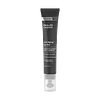What's inside
What's inside
 Key Ingredients
Key Ingredients

 Benefits
Benefits

 Concerns
Concerns

No concerns
 Ingredients Side-by-side
Ingredients Side-by-side

Water
Skin ConditioningCyclopentasiloxane
EmollientButylene Glycol
HumectantPentylene Glycol
Skin ConditioningTapioca Starch
Methyl Gluceth-20 Benzoate
EmollientGlycerin
HumectantDimethicone
EmollientCyclohexasiloxane
EmollientPolysilicone-11
Palmitoyl Tripeptide-38
Skin ConditioningCaprooyl Tetrapeptide-3
Skin ProtectingPalmitoyl Tripeptide-5
Skin ConditioningNiacinamide
SmoothingPhospholipids
Skin ConditioningHyaluronic Acid
HumectantSodium Hyaluronate
HumectantVitis Vinifera Seed Extract
AntimicrobialPanthenol
Skin ConditioningSalix Alba Extract
Skin ConditioningCamellia Sinensis Leaf Extract
AntimicrobialAdenosine
Skin ConditioningGlycyrrhiza Glabra Root Extract
BleachingPisum Sativum Extract
Skin ConditioningPolyacrylate Crosspolymer-6
Emulsion StabilisingDunaliella Salina Extract
Skin ConditioningHydroxypropyl Cyclodextrin
MaskingDextran
Polysorbate 20
EmulsifyingAmmonium Acryloyldimethyltaurate/Vp Copolymer
Disodium EDTA
Phenoxyethanol
PreservativeWater, Cyclopentasiloxane, Butylene Glycol, Pentylene Glycol, Tapioca Starch, Methyl Gluceth-20 Benzoate, Glycerin, Dimethicone, Cyclohexasiloxane, Polysilicone-11, Palmitoyl Tripeptide-38, Caprooyl Tetrapeptide-3, Palmitoyl Tripeptide-5, Niacinamide, Phospholipids, Hyaluronic Acid, Sodium Hyaluronate, Vitis Vinifera Seed Extract, Panthenol, Salix Alba Extract, Camellia Sinensis Leaf Extract, Adenosine, Glycyrrhiza Glabra Root Extract, Pisum Sativum Extract, Polyacrylate Crosspolymer-6, Dunaliella Salina Extract, Hydroxypropyl Cyclodextrin, Dextran, Polysorbate 20, Ammonium Acryloyldimethyltaurate/Vp Copolymer, Disodium EDTA, Phenoxyethanol
Water
Skin ConditioningPropanediol
SolventGlycerin
HumectantMyristyl Myristate
EmollientGlyceryl Stearate Citrate
EmollientCetearyl Isononanoate
EmollientSqualane
EmollientXylitol
HumectantAscorbyl Glucoside
AntioxidantHesperidin Methyl Chalcone
AntioxidantSodium Hyaluronate
HumectantTocopheryl Acetate
AntioxidantSclerotium Gum
Emulsion StabilisingBiotin
AntiseborrhoeicSodium Benzoate
MaskingSteareth-20
CleansingPotassium Sorbate
PreservativeChlorhexidine Digluconate
AntimicrobialN-Hydroxysuccinimide
Skin ConditioningPalmitoyl Tripeptide-1
Skin ConditioningDipeptide-2
Skin ConditioningPalmitoyl Tetrapeptide-7
Skin ConditioningChrysin
Skin ConditioningCitric Acid
BufferingSodium Hydroxide
BufferingSodium Citrate
BufferingWater, Propanediol, Glycerin, Myristyl Myristate, Glyceryl Stearate Citrate, Cetearyl Isononanoate, Squalane, Xylitol, Ascorbyl Glucoside, Hesperidin Methyl Chalcone, Sodium Hyaluronate, Tocopheryl Acetate, Sclerotium Gum, Biotin, Sodium Benzoate, Steareth-20, Potassium Sorbate, Chlorhexidine Digluconate, N-Hydroxysuccinimide, Palmitoyl Tripeptide-1, Dipeptide-2, Palmitoyl Tetrapeptide-7, Chrysin, Citric Acid, Sodium Hydroxide, Sodium Citrate
Ingredients Explained
These ingredients are found in both products.
Ingredients higher up in an ingredient list are typically present in a larger amount.
Glycerin is already naturally found in your skin. It helps moisturize and protect your skin.
A study from 2016 found glycerin to be more effective as a humectant than AHAs and hyaluronic acid.
As a humectant, it helps the skin stay hydrated by pulling moisture to your skin. The low molecular weight of glycerin allows it to pull moisture into the deeper layers of your skin.
Hydrated skin improves your skin barrier; Your skin barrier helps protect against irritants and bacteria.
Glycerin has also been found to have antimicrobial and antiviral properties. Due to these properties, glycerin is often used in wound and burn treatments.
In cosmetics, glycerin is usually derived from plants such as soybean or palm. However, it can also be sourced from animals, such as tallow or animal fat.
This ingredient is organic, colorless, odorless, and non-toxic.
Glycerin is the name for this ingredient in American English. British English uses Glycerol/Glycerine.
Learn more about GlycerinSodium Hyaluronate is hyaluronic acid's salt form. It is commonly derived from the sodium salt of hyaluronic acid.
Like hyaluronic acid, it is great at holding water and acts as a humectant. This makes it a great skin hydrating ingredient.
Sodium Hyaluronate is naturally occurring in our bodies and is mostly found in eye fluid and joints.
These are some other common types of Hyaluronic Acid:
Learn more about Sodium HyaluronateWater. It's the most common cosmetic ingredient of all. You'll usually see it at the top of ingredient lists, meaning that it makes up the largest part of the product.
So why is it so popular? Water most often acts as a solvent - this means that it helps dissolve other ingredients into the formulation.
You'll also recognize water as that liquid we all need to stay alive. If you see this, drink a glass of water. Stay hydrated!
Learn more about Water